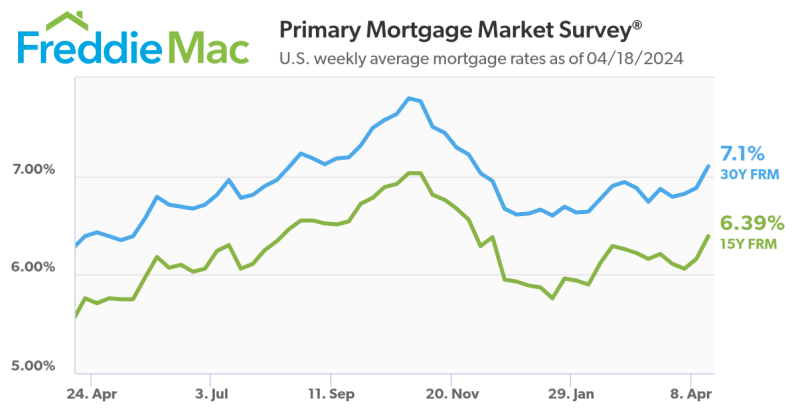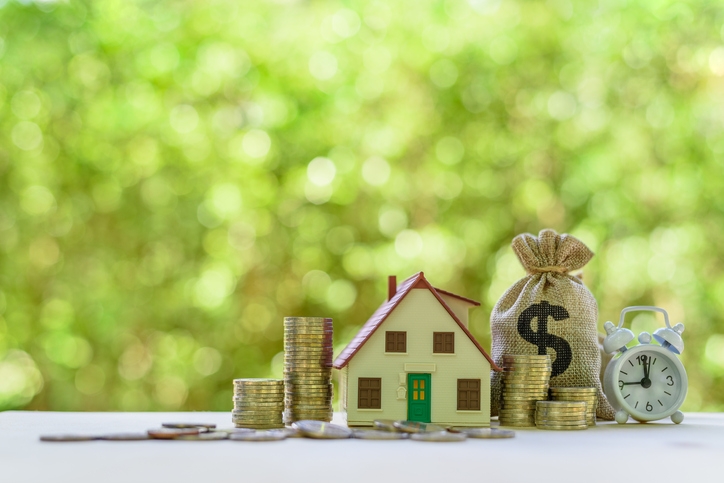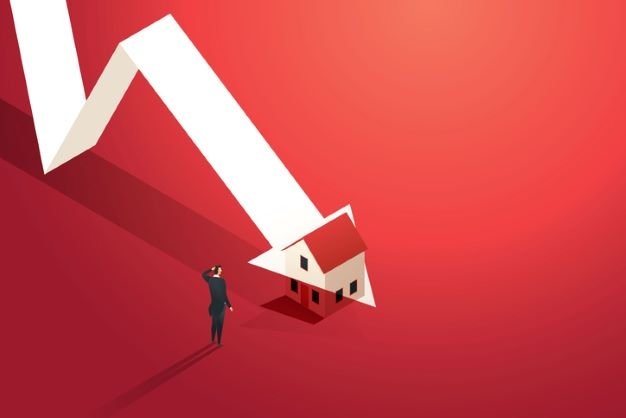Advertisement
NAMB responds to GSE stability measures
Delinquencies and foreclosures increase in latest MBA national surveyMortgagePress.comdelinquency, foreclosure, survey, sub-prime loans
The delinquency rate for mortgage loans on one-to-four-unit
residential properties stood at 6.41 percent of all loans
outstanding at the end of the second quarter of 2008, up six basis
points from the first quarter of 2008, and up 129 basis points from
one year ago on a seasonally adjusted basis, according to the
Mortgage Bankers Association's (MBA) National Delinquency
Survey.
The delinquency rate includes loans that are at least one
payment past due but does not include loans somewhere in the
process of foreclosure. The percentage of loans in the foreclosure
process at the end of the second quarter was 2.75 percent, an
increase of 28 basis points from the first quarter of 2008 and 135
basis points from one year ago. The percentage of loans on which
foreclosure actions were started during the second quarter was 1.08
percent, up seven basis points from last quarter and up 49 basis
points from one year ago on a non-seasonally adjusted basis.
The seasonally adjusted total delinquency rate continues to be
the highest recorded in the MBA survey. The increase in the overall
delinquency rate was driven by increases in the number of loans 90
or more days past due, primarily in California and Florida. The 30
day delinquency percentage remains below levels seen as recently as
2002. Once again this quarter, the rate of foreclosure starts and
the percentage of loans in the process of foreclosure set new
records.
The foreclosure starts rate differed greatly by loan type. For
prime loans, foreclosure starts on fixed-rate loans were 0.34
percent, an increase of five basis points, while prime ARM
foreclosure starts were 1.82 percent, a 26 basis point increase.
For sub-prime loans, fixed-rate foreclosure starts increased 27
basis points to 2.07 percent and sub-prime ARM foreclosure starts
increased 31 basis points to 6.63 percent. Federal Housing
Administration (FHA) foreclosure starts decreased one basis point
to 0.95 percent and U.S. Department of Veterans Affairs (VA)
foreclosure starts increased six basis points to 0.57 percent, all
on a non-seasonally adjusted basis.
"The national foreclosure numbers continue to be driven by the
hardest hit states continuing to get much worse. The increases in
foreclosures in California and Florida overwhelmed improvements in
states like Texas, Massachusetts and Maryland," said Jay Brinkmann,
MBA's Chief Economist and Senior Vice President for Research and
Economics. "For the quarter, a majority of the states saw
relatively little change one way or the other. California and
Florida alone accounted for 39 percent of all of the foreclosures
started in the country during the second quarter and 73 percent of
the increase in foreclosures between the first and second
quarters."
Only eight states had rates of foreclosure starts that were
above the national average: Nevada, Florida, California, Arizona,
Michigan, Rhode Island, Indiana, and Ohio. The remaining 42 states
plus the District of Columbia were below the national average. "The
other factor that continues to drive foreclosure rates is loan
type," continued Brinkmann. "Sub-prime ARM loans accounted for 36
percent of all foreclosures started and prime ARMs, which include
option ARMs, represented 23 percent. However, the increase in prime
ARMs foreclosure starts was greater than the combined increase in
fixed-rate and ARM sub-prime loans. Thus the foreclosure start
numbers will likely be increasingly dominated increasingly by prime
ARM loans.
California and Florida accounted for 58 percent of all prime ARM
foreclosure starts in the second quarter and 78 percent of the
increase in prime ARM foreclosure starts. The foreclosure starts
rates on prime ARMs were 2.47 percent for California and 3.20
percent for Florida, versus the national median of 1.06 percent.
The foreclosure starts rate for sub-prime ARM loans in California
was 9.5 percent and in Florida 9.1 percent, about double the
national median rate for sub-prime ARMs.
"Perhaps the question most asked these days is whether we are
close to a bottom, in other words, when will delinquency and
foreclosure rates begin to head down. The simple answer is that the
idea of a national bottom is somewhat meaningless. Real estate
markets are local and some markets are already improving. For
example, even Michigan, one of the worst hit markets in the
country, has now gone three quarters with little to no increase in
its rate of foreclosures. Likewise, Massachusetts showed a very
large drop in foreclosure starts, perhaps signaling a bottom.
Because of the sheer size of California and Florida, an improvement
in the national numbers, whether delinquencies, home prices or any
other measure is unlikely until we see some turnaround in those two
states," Brinkmann said. MBA reports seasonally adjusted and
unadjusted numbers for the major mortgage performance indices.
30-day delinquencies exhibit the strongest seasonality, followed by
60-day and 90-day delinquencies.
For foreclosure starts, the difference between the seasonally
adjusted and unadjusted numbers is normally only a few basis
points. For the first time this quarter, the difference jumped to
11 basis points. The reason is that with the fundamental changes in
mortgage performance, seasonal adjustment models estimated in more
benign environments can lead to questionable results and incorrect
conclusions. Since the fundamental factors now driving foreclosures
clearly overwhelm any seasonal factors, the seasonally adjusted
results for foreclosure starts are most likely misleading unless
there is a major increase in the third quarter.
Change from last quarter (first quarter of
2008)
The seasonally adjusted delinquency rate increased 22 basis points
for prime loans to 3.93 percent. The delinquency rate decreased 12
basis points for sub-prime loans to 18.67 percent, decreased nine
basis points for FHA loans to 12.63 percent, and decreased 40 basis
points for VA loans to 6.82 percent.
The foreclosure inventory rate increased 20 basis points for
prime loans to 1.42 percent, and increased 107 basis points for
sub-prime loans to 11.81 percent. FHA loans saw a 16 basis point
decrease in foreclosure inventory rate to 2.24 percent, while the
foreclosure inventory rate for VA loans increased nine basis points
to 1.33 percent. The non-seasonally adjusted foreclosure starts
rate increased six basis points for prime loans to 0.61 percent,
increased 18 basis points for sub-prime loans to 4.26 percent,
increased six basis points for VA loans to 0.57 percent, and
declined one basis point for FHA loans to 0.95 percent.
The seriously delinquent rate, the non-seasonally adjusted
percentage of loans that are 90 days or more delinquent, or in the
process of foreclosure, was up from both last quarter and from last
year. This measure is designed to account for inter-company
differences on when a loan enters the foreclosure process.
Compared with last quarter, the seriously delinquent rate
increased for all loan types, except FHA loans. The rate increased
36 basis points for prime loans to 2.35 percent, increased 143
basis points for sub-prime loans to 17.85 percent, increased 12
basis points for VA loans percent to 3 percent and decreased 16
basis points for FHA loans to 5.43 percent.
Change from last year (second quarter of
2007)
On a year-over-year basis, the seasonally adjusted delinquency rate
increased for all loan types. The delinquency rate increased 120
basis points for prime loans, increased 385 basis points for
sub-prime loans, increased five basis points for FHA loans, and
increased 67 basis points for VA loans.
The percent of loans in the foreclosure process increased 83
basis points for prime loans and 629 basis points for sub-prime
loans. The rate increased nine basis points for FHA loans and 31
basis points for VA loans. The non-seasonally adjusted foreclosure
starts rate increased 49 basis points overall, 36 basis points for
prime loans, 181 basis points for subprime loans, 21 basis points
for FHA loans, and 23 basis points for VA loans. The seriously
delinquent rate was 137 basis points higher for prime loans and 858
basis points higher for sub-prime loans. The rate also increased 25
basis points for FHA loans and 65 basis points for VA loans.
For more information, contact Carolyn Kemp at (800) 348-8653
or e-mail [email protected].
About the author





